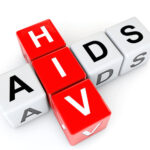Professor Hussaini Doko Ibrahim is the Director-General of the Raw Material Research Development Council (RMRDC). In this interview, he speaks on the efforts to curtail tuberculosis amid the growing number of infected patients.
What is tuberculosis and the extent of the affliction globally?
The main cause of tuberculosis is Mycobacterium tuberculosis which is a small, aerobic, non-motile bacillus. Roughly one-quarter of the world’s population is infected with M. tuberculosis, with new infections occurring in about 1% of the population each year.
Tuberculosis is the second-most common cause of death from infectious diseases after HIV/AIDS. However, most infections with M. tuberculosis do not cause TB disease, and 90–95% of infections remain asymptomatic.
In 2010, 8.8 million new cases of TB were diagnosed, and 1.20–1.45 million deaths occurred, mostly in developing countries. Of the 1.45 million deaths, about 0.35 million occur in those also infected with HIV.
In 2012, an estimated 8.6 million chronic cases were estimated to be active. Tuberculosis is now more common in developing countries with about 80% of the population in many Asian and African countries. The hope of totally controlling the disease has been dramatically dampened because of a number of factors.
Among the factors are the difficulty of developing an effective vaccine, the expensive and time-consuming diagnostic process, the necessity of many months of treatment, the increase in HIV-associated tuberculosis, and the emergence of drug-resistant cases in the 1980s.
The rates of tuberculosis infection per 100,000 people in different areas of the world have been reported as 332 in Africa, 36 in the Americas, 173 in Eastern Mediterranean, 63 in Europe,278 in Southeast Asia, and 139 in the Western Pacific.
A number of factors make people more susceptible to TB infections. The most important risk factor globally is HIV. This is a particular problem in sub-Saharan Africa, where rates of HIV are high.
Of people without HIV who are infected with tuberculosis, about 5–10% develops active disease during their lifetimes.
In contrast, 30% of those co-infected with HIV develop the active disease.
What are the major causes of the infection?
The disease is also closely linked to both overcrowding and malnutrition, making it one of the major indicators of poverty.
Those at high risk include people who inject illicit drugs, inhabitants and employees of areas where vulnerable people gather such as prisons and homeless shelters, medically underprivileged and resource-poor communities, high-risk ethnic minorities, children in close contact with high-risk category patients, and health-care providers serving these patients.
Chronic lung disease is another significant risk factor. Silicosis increases the risk about 30-fold.
Those who smoke cigarettes have nearly twice the risk of TB compared to non-smokers and people living with diabetes mellitus.
Can you describe the mode of the infection?
The general mode of infection with active pulmonary TB include being near where a patient cough, sneeze, speak, sing, or spit, as they expel infectious aerosol droplets 0.5 to 5.0 µm in diameter.
A single sneeze can release up to 40,000 droplets. Each one of these droplets may transmit the disease.
The probability of transmission from one person to another depends upon several factors, including the number of infectious droplets expelled by the carrier, the effectiveness of ventilation, the duration of exposure, the virulence of the M. tuberculosis strain, the level of immunity in the uninfected person, and others.
In which countries is tuberculosis a major threat globally?
Tuberculosis (TB) remains a significant public health issue in low-income middle-income countries and is the leading cause of deaths as a single infectious disease, ranking above human immunodeficiency virus and acquired immune deficiency syndrome (HIV/AIDS).
The World Health Organization’s Global Tuberculosis Report of 2017 reported 6.3 million new cases of TB among HIV-negative people in 2016, compared to 6.1 million in 2015.
Similarly, the Global Burden of Diseases, Injuries and Risk Factors (GBD) study published in 2016 estimated 9.0 million TB-HIV-negative incident cases compared to 8.8 million in 2015.
These reports highlighted the considerable burden of TB globally.
In the past two decades, the World Health Organization has listed Nigeria as one of the countries with a high burden of TB.
About 80% of individuals diagnosed with the disease every year live in the 22 most populous countries, with Nigeria ranking 4th of the 22 high burden tuberculosis countries and has the highest new cases of TB in Africa. In 2006 Tuberculosis was declared a national emergency in Nigeria.
For Nigeria to achieve the WHO goal of ending TB, a multipronged approach will be needed.
The strategic measures should include closing the funding gaps for TB control programmes and reducing the reliance on international donors; scaling up of the national immunization schedules; improving the political commitment at all levels of government; and strengthening the healthcare system and TB diagnosis and surveillance, including improving coordination, integration and consistency in the primary health care structure through the National Primary Care Health Development Agency.
What is the cost of tuberculoses to the global and national economies?
Recent studies indicated that the global burden of TB amounts to approximately $12 billion annually.
Malnutrition, overcrowding, poor air circulation and sanitation-factors associated with poverty-increase both the probability of becoming infected and the probability of developing clinical disease. For individuals with TB, costs arise from a loss of work or a reduction in productivity due to illness.
By the time the patients are presented for treatment at the TB clinic, they had already incurred costs which in most cases are equal to one-third of annual household income.
Studies in parts of Africa showed that 80% of wage earners had to stop work because of the disease and 95% of subsistence farmers reported that production had decreased due to their reduced capacity to work The average time lost from normal activities was 9.5 months, the average income lost from inability to work had been estimated at about 89% of GDP per capita.
Does it mean that tuberculosis is incurable? If no, how is it cured?
To me, I will say that we must effectively increase our capacity for tuberculosis prevention and control. I will advocate for that anytime.
More hygienic living and poverty eradication will assist in preventing tuberculosis infection.
A recent study indicated the need for governance imperatives to strengthen TB control programme in Nigeria. According to the study, effective governance for TB control should entail adequate policy coordination; increased and predictable TB financing; and collaborative design and implementation of strategies for TB control.
Nevertheless I wish to highlight the fact that with the proper treatment, tuberculosis is curable. Let me also point out that depending on risk factors, latent TB can re-activate and cause an active infection.
The treatment for latent TB include the use of Isoniazid, Rifampin (Rifadin, Rimactane) or rifapentine antibiotics as directd by physicians. For Active TB, a number of antibiotics such as Ethambutol (Myambutal), Isoniazid, Pyrazinamide and Rifampin are usually recommended for a period of 6 to 9 months.
Resistant TB are usually treated with a combination of second-line drugs for a longer period of time. The Antibiotics are called fluoroquinolones, an injectable antibiotic, such as amikacin (Amikin), capreomycin (Capastat), and kanamycin and Newer antibiotic treatments, such as bedaquiline (Sirturo), ethionamide (Trecator), and para-amino salicylic acid.
How far have we achieved the Millenium Development Goals on tuberculosis globally?
The global objective for reduction in TB is encapsulated in MDG target 6.C which stipulates the need to reverse the spread of the disease by 2015.
In 2013, there were an estimated 9 million new cases and 1.5 million deaths (including 360 000 deaths among HIV-positive people).
While globally, treatment success rates have been sustained at high levels since 2007, multi-drug resistant tuberculosis (MDR-TB), which emerged primarily as a result of inadequate treatment, the overuse of costly synthetic antibiotics has become a major factor for the emergence of serious infections and continues to pose problems.
This necessitated the need for new approaches, most especially in developing countries where the disease is more common.
As a result, the Council was prompted to collaborate with the National Institute for Pharmaceutical Research and Development (NIPRD), Idu, Abuja to promote the use of medicinal plants for the management of the infection.
What efforts has your organization made towards the achievement of the MDG goals on tuberculosis eradication and what are the achievements recorded so far?
In the traditional society in Nigeria, large percentage of the population, particularly, in the rural areas, depend on the traditional medicine for their primary health care.
Plants have contributed significantly as starting points for the development of modern drugs therefore; they represent potential sources of new drugs acting through novel mechanisms, in the search for new, more potent and safe anti-tuberculosis agents.
In an effort to develop new drugs for TB, the Council in collaboration with the NIPRD have developed phyto-medicine for the treatment of tuberculosis from leaves of three local plants. The project has provided a lead to alternative supplementary sources of raw materials for anti-tuberculosis drugs.
While the patent for the drug has been obtained, remaining steps to achieve the commercialization of the project is being vigorously pursued after which listing of the anti-tuberculosis phytomedicine with NAFDAC will be done and domestication of the most effacious plant amongst the 3 plants used.
When commercialized, the product which has the potentials to reduce importation of TB drugs in the Country.
The Council is facilitating the accomplishment of these initiatives in view of the importance of the project to the well being of a large number of our populace and its effect on foreign exchange savings locally.
On completion of this project, the initiative will save the nation the need to import synthetic drugs for the management of tuberculosis in Nigeria in addition to improving the health of our citizens.

 Join Daily Trust WhatsApp Community For Quick Access To News and Happenings Around You.
Join Daily Trust WhatsApp Community For Quick Access To News and Happenings Around You.

